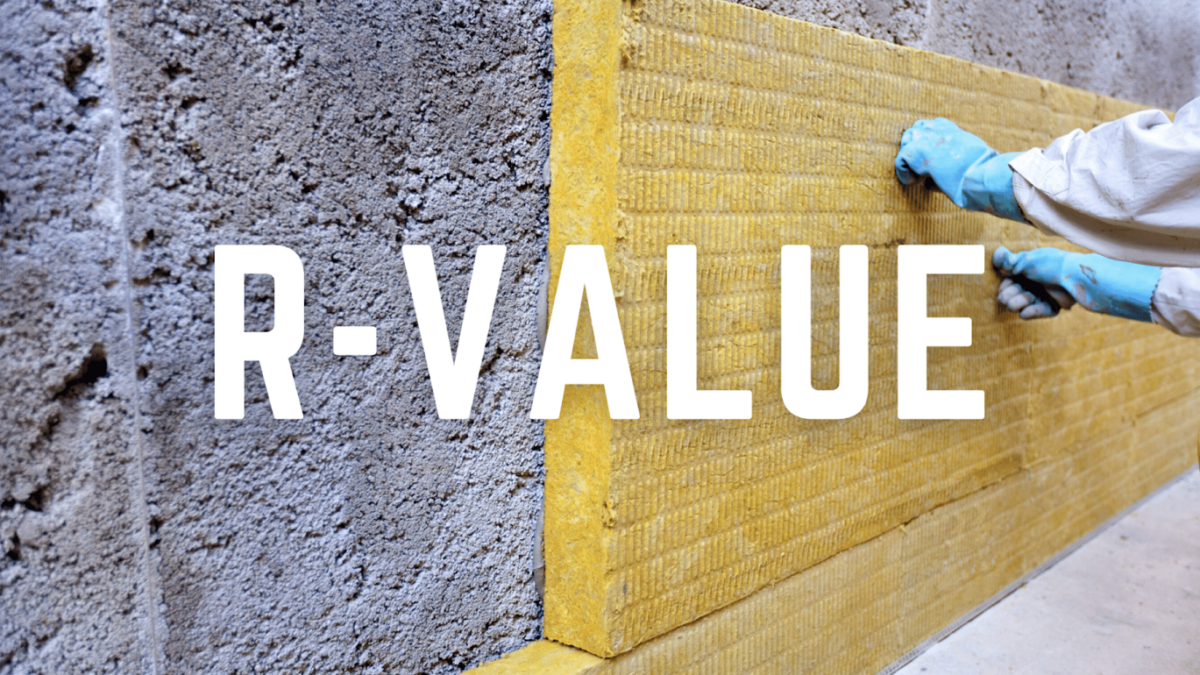Your Basic Guide To Insulation R-Value
Insulation helps keep your home warm in the winter and cool in the summer. Having a well insulated property is more than just a matter of comfort. When done right, insulation keeps energy costs down thereby reducing your carbon footprint, saving you valuable dollars for the long term. Insulation also increases the value of property for resale.
According to the Department of Energy, about nine in 10 homes in the United States are under-insulated. Older homes are particularly vulnerable to poor insulation and the discomfort associated with having hot and cold spots in a property. Adding insulation and sealing air leaks around the home can result in 10% savings on annual utility bills.
Many of these common problems are solved with improved insulation:
- Reduced noise from outside
- Less pollen, dust and insects (or pests) entering the home
- Better humidity control
- Lower chance for ice dams on the roof/eaves in snowy climates
The main driver of how well insulation does at mitigating these issues is best described by the “R-value”. Whether you are building a new home or refurbishing an existing one, it’s worthwhile to develop an understanding of Insulation R-Value.
Here is a short, essential guide to get started.
What is R-Value?
Insulation levels are specified by R-Value. The term R-value stands for thermal resistance and is a measure of an insulation’s ability to resist heat flow. R-value can be given for a material (e.g. for polyurethane foam), or for an assembly of materials (e.g. a wall or a window).
The higher the R-Value, the better the thermal performance of the insulation per inch of thickness.
How do R-Values compare with different types of insulation?
R-Value is not a permanent measure. Instead the degree of insulation depends on the material chosen and its thickness in the wall cavity. Aside from the thermal quality and thickness of the insulating material, there are other factors that can cause the R-value to decrease and make the insulation less effective. For example, as loose fiberglass insulation settles, its thickness decreases and the effective R-Value decreases as well.
Improper installation can also cause insulation materials like cellulose, foam board, or even spray foam to lose their individual R-Values. If the material is not installed to fit perfectly and evenly within the wall cavity, it creates a gap for air and moisture to seep through and compromise the insulation. When insulating materials get wet, it impedes their ability to prevent air flow. This not only causes the material to lose its ability to insulate, but it could also lead to the growth of mold.
How Much R-Value Should My Insulation Have?
The proper amount of R-value needed for a property will depend on their location and its climate. (Refer to the US climate chart and the R-Value recommendations on the table below). For example, homes in the southern United States can be insulated with materials that have R-values between R30 to R60 for attics and R13 to R19 for walls and floors. On the other hand, homes in northern states should use attic insulation with R49 to R60 and floor insulation with R25 to R30. It is acceptable to increase the R-value of an existing insulation by adding material with lesser R-value. The final R-value is based on the total thickness.
| IECC Climate Zones – United States |
Insulation R-Values by Location, Heat Type & Area
There is no set standard for insulation in an area. Several factors determine how much or how little insulation is needed. These factors include geographic location and type of heating system used. The chart below outlines the R-value recommendation for different areas in your home for the zones outlined by energystar.gov and the furnace heat source you have. The chart also gives common types of insulation and their R-value.
| Location | Heat Type | Attic | Wall | Floor | Crawl Space Wall** | Basement Wall |
| Natural Gas | 38-49 | 13 | 13 | 13 | 11 | |
| Oil Furnace | 38-49 | 13 | 13 | 13 | 11 | |
| Electric Furnace | 38-49 | 13 | 13 | 13 | 11 | |
| Electric Baseboard | 38-49 | 13 | 13 | 13 | 11 | |
| Heat Pump | 38-49 | 13 | 13 | 13 | 11 | |
| LPG Furnace | 38-49 | 13 | 13 | 13 | 11 | |
| Natural Gas | 38 | 13 | 13-19 | 13 | 11 | |
| Oil Furnace | 38 | 13 | 13-19 | 13-25 | 11 | |
| Electric Furnace | 38-49 | 13 | 19-25 | 25 | 11 | |
| Electric Baseboard | 38-49 | 13 | 13-25 | 13-25 | 11 | |
| Heat Pump | 38 | 13 | 13-19 | 13 | 11 | |
| LPG Furnace | 38-49 | 13 | 19-30 | 25 | 11 | |
| Natural Gas | 30-38 | 13 | 13-19 | 13-25 | 11 | |
| Oil Furnace | 38 | 13 | 13-19 | 13 | 11 | |
| Electric Furnace | 38 | 13 | 13-19 | 13-25 | 11 | |
| Electric Baseboard | 38 | 13 | 13-19 | 13 | 11 | |
| Heat Pump | 30-38 | 13 | 13 | 13 | 11 | |
| LPG Furnace | 38-49 | 13 | 13-30 | 13-25 | 11 | |
| Natural Gas | 38-49 | 13 | 25-30 | 25 | 11 | |
| Oil Furnace | 49 | 13 | 30 | 25 | 11 | |
| Electric Furnace | 38-49 | 13 | 25-30 | 25 | 25 | |
| Electric Baseboard | 49 | 13 | 30 | 25 | 11 | |
| Heat Pump | 38-49 | 13 | 13-25 | 13-25 | 11 | |
| LPG Furnace | 49 | 13 | 30 | 25 | 11-25 | |
| Natural Gas | 38 | 13 | 25 | 25 | 11 | |
| Oil Furnace | 49 | 13 | 30 | 25 | 11-15 | |
| Electric Furnace | 49 | 13 | 30 | 25 | 25 | |
| Electric Baseboard | 49 | 13 | 30 | 25 | 11 | |
| Heat Pump | 38 | 13 | 30 | 25 | 11 | |
| LPG Furnace | 49 | 13 | 30 | 25 | 25 | |
| Natural Gas | 49 | 13 | 30 | 25 | 25 | |
| Oil Furnace | 49 | 13 | 30 | 25 | 25 | |
| Electric Furnace | 49 | 13 | 30 | 25 | 25 | |
| Electric Baseboard | 49 | 13 | 30 | 25 | 25 | |
| Heat Pump | 49 | 13 | 30 | 25 | 25 | |
| LPG Furnace | 49 | 13 | 30 | 25 | 25 | |
| *Ranges resulted from the selection of two different zip codes within the same zone (i.e. Dover, DE and Chattanooga,TN for zone 4)**Crawl space walls that are vented or have moist problems should not be insulated. | ||||||
R-Value of Materials
Along with knowing the R-value of a particular insulation, it is also important to calculate the R-value of a total system. For example, a wall with 3 ½” fiberglass batting (R-value of 10.8 – 11.9) may have an overall R-value of nearly 14 because of siding, sheathing and drywall. Refer to the omni online calculator to determine the R-value of the system.
Keep in mind this calculator does not factor in drywall (R-value .45).
Does the Highest R-Value Mean the Best Insulation?
No. There is more to consider when buying new insulation such as location, climate, the HVAC systems installed, etc. Ultimately, the R-Value of insulation comes down to creating a tight air seal. For example, piling on inches of spray foam is a waste of money if you don’t create a strong thermal barrier to keep moisture out.
Depending on the building code in your area, the contractor should be able to prove that your insulation system creates an air seal, has an aged R-Value, and several other variables, in order to pass inspection. Proving all of this is done by taking all of the insulation data, room assemblies and more, and submitting them for audit through programs like REScheck or HERS Index.
If you would like to explore your options in setting up the right insulation system for your home, or simply need more information — contact us to discuss your project with one of our experts today.




